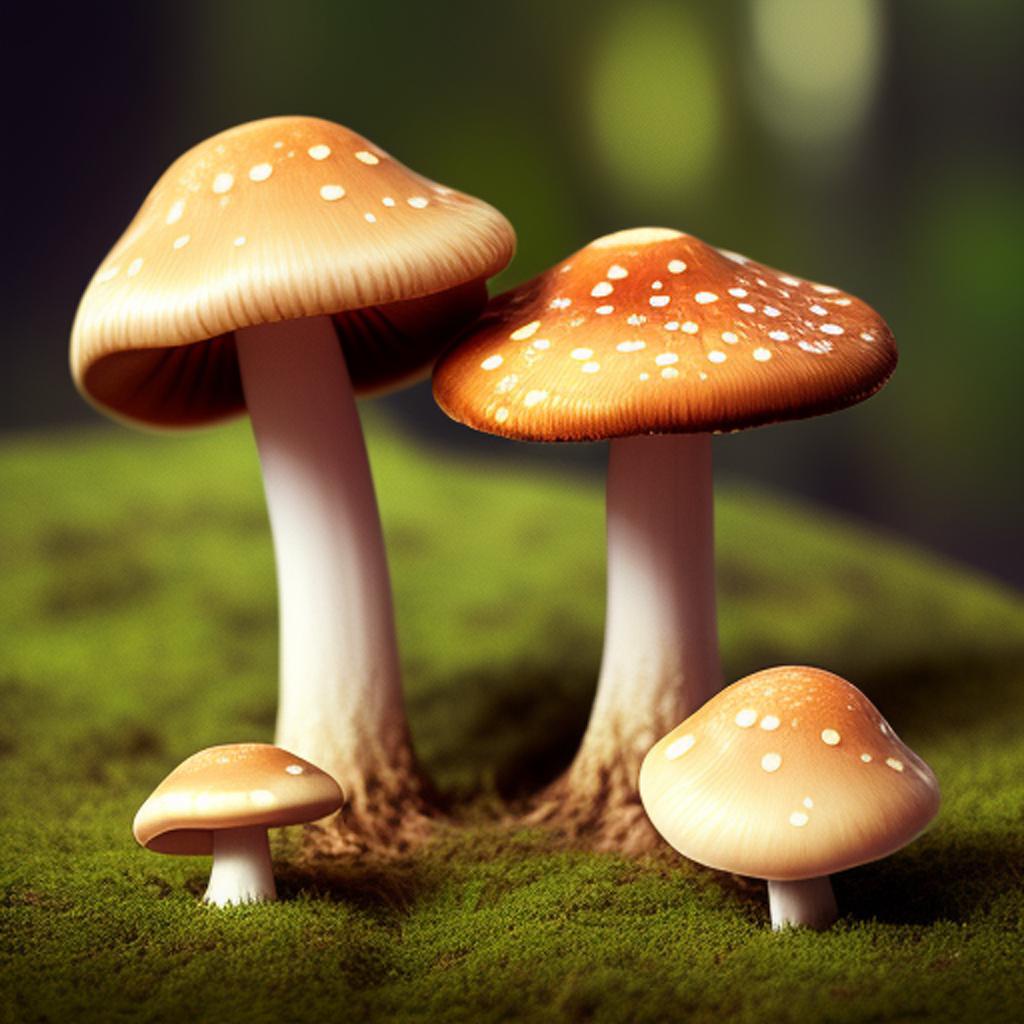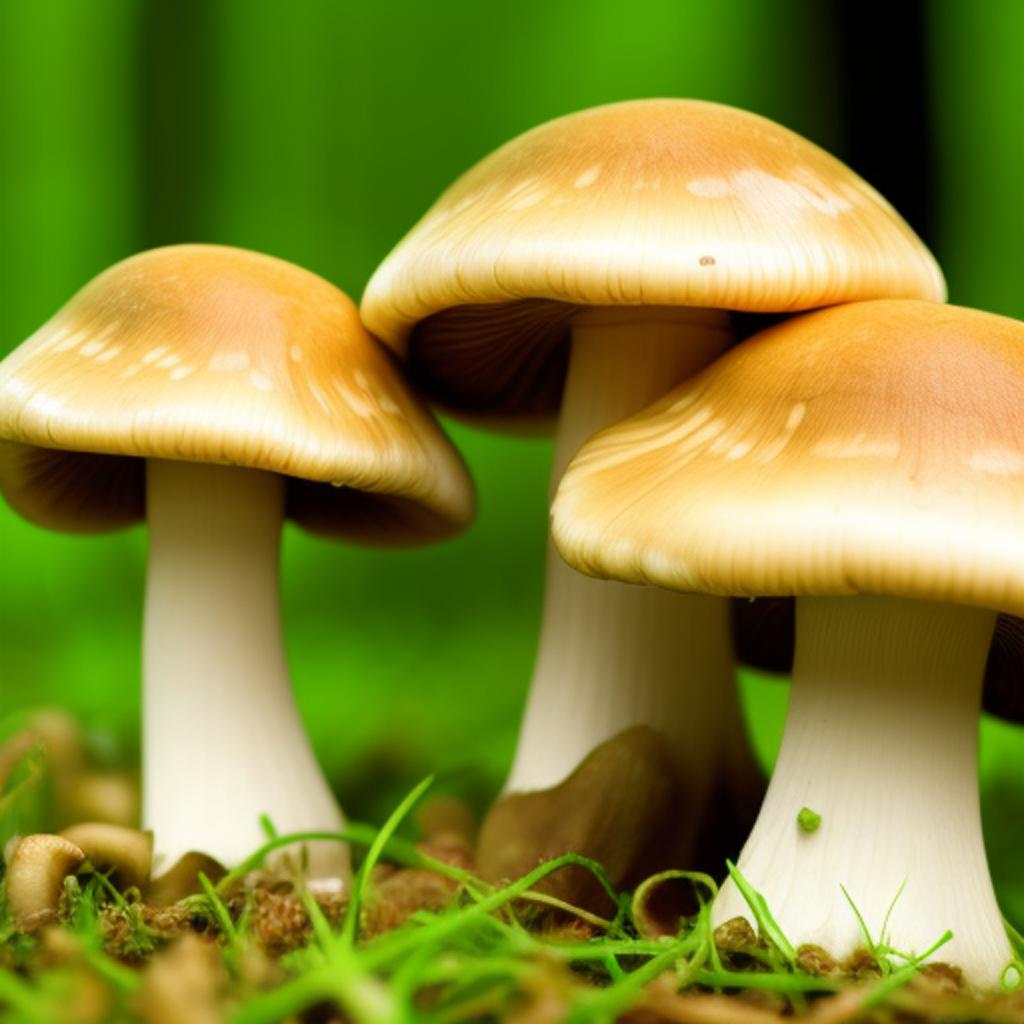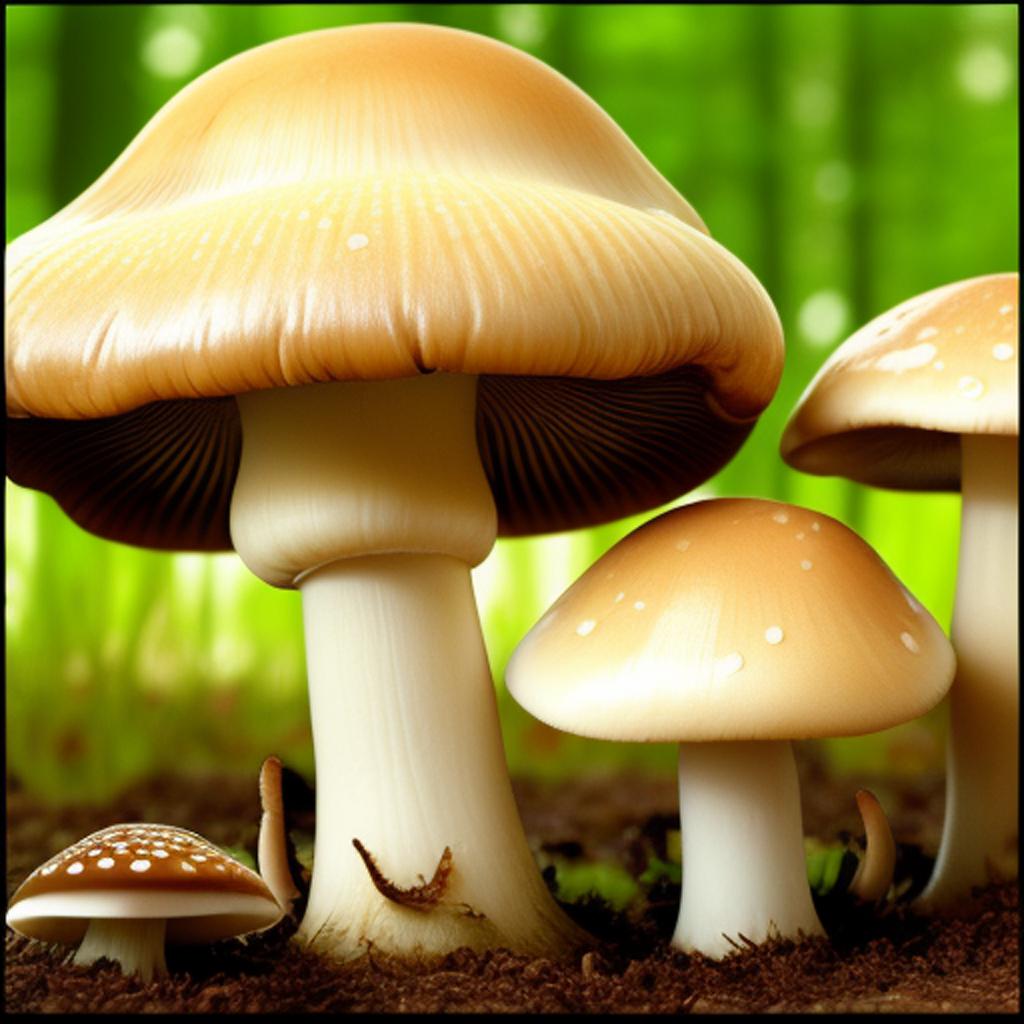Welcome to our blog post on the shelf life of dried mushrooms. If you’ve ever wondered how long dried mushrooms will last in your pantry, this article is for you. We’ll explore the factors that can affect their shelf life, provide information on average storage times, discuss signs of spoilage, and share tips for extending their lifespan. Whether you’re a culinary enthusiast or simply want to make the most out of your dried mushroom supply, read on to learn more!
Factors Affecting the Shelf Life of Dried Mushrooms
Proper storage conditions and moisture control are key to extending the shelf life of dried mushrooms, ensuring you can savor their flavors for longer.
1. Storage Conditions: Proper storage conditions play a crucial role in extending the shelf life of dried mushrooms. Keeping them in a cool and dark place helps to maintain their quality and prevent decay.
2. Quality of Dried Mushrooms: The initial quality of dried mushrooms also affects their shelf life. High-quality mushrooms that are properly dried have a longer lifespan compared to those with compromised quality.
3. Presence of Moisture: Moisture is the enemy when it comes to preserving dried mushrooms. Even small amounts can lead to spoilage and reduce their shelf life significantly, so it’s essential to ensure they are stored in an environment with low humidity or use moisture-absorbing techniques like compound butter seals for added protection.
By understanding these factors that affect the shelf life of dried mushrooms, you can make informed decisions about storage methods and enjoy their flavors for an extended period.
Storage Conditions
- Proper temperature and humidity: Dried mushrooms should be stored in a cool and dark place to prevent decay. The ideal temperature range is between 50°F (10°C) and 70°F (21°C), with a humidity level below 60%.
- Airtight containers or packaging: To maintain the freshness of dried mushrooms, it is crucial to store them in airtight containers or packaging. This helps prevent exposure to moisture, air, and any potential contaminants.
- Avoid exposure to sunlight or heat: Sunlight and heat can degrade the quality of dried mushrooms by causing color fading and flavor loss. It’s important to keep them away from direct sunlight or sources of heat such as stovetops, ovens, or radiators.
Quality of Dried Mushrooms
Freshness plays a crucial role in determining the quality of dried mushrooms. It is essential to start with fresh mushrooms before drying them, as any decay or mold present will only intensify during the drying process. Proper handling and processing methods are vital to ensure that the mushrooms are carefully harvested, cleaned, and dried in cool and dark conditions. Any presence of mold or contaminants should be strictly avoided to maintain the integrity and safety of the dried mushrooms.
Presence of Moisture
Low moisture content during the drying process is crucial for extending the shelf life of dried mushrooms. This ensures that the mushrooms are properly dehydrated, reducing the risk of decay and bacterial growth. Additionally, when storing dried mushrooms, it is important to ensure there is an absence of condensation in storage containers. Moisture can lead to mold or spoilage, compromising the quality and safety of your dried mushrooms. To assess if your dried mushrooms are adequately dry, perform a “snap” test – they should not bend easily but instead break with a crisp snap. Properly stored and moisture-free dried mushrooms can last for an extended period while maintaining their flavor and texture.
Average Shelf Life of Dried Mushrooms

Properly stored dried mushrooms can have an average shelf life of up to 2 years. Ensure they are kept in a cool, dry place away from light and moisture to maintain their quality and flavor.
Poorly stored dried mushrooms may spoil within a few months, losing their taste and texture. Exposure to heat, humidity, or direct sunlight can accelerate the deterioration process. It is essential to store them properly for longer-lasting enjoyment.
Properly Stored Dried Mushrooms
Storage Conditions:
Dried mushrooms should be stored in an airtight container, preferably glass, in a cool and dark place. Exposure to heat, moisture, and light can degrade their quality.
Benefits of Proper Storage:
Properly stored dried mushrooms retain their flavor and nutritional value for longer periods. They maintain their distinct aroma and texture when rehydrated, enhancing the taste of your dishes.
Recommended Shelf Life:
When stored correctly, dried mushrooms can have a shelf life of up to one year. However, it is recommended to use them within six months for optimal flavor and quality. Regularly check for any signs of mold or spoilage before using them in recipes.
Poorly Stored Dried Mushrooms
1. Common Mistakes in Storage:
Improper sealing and exposure to moisture are common mistakes in storing dried mushrooms. Many people overlook the importance of airtight containers, which can lead to accelerated deterioration of the mushrooms’ quality. Additionally, storing them near sources of heat or direct sunlight can cause further damage.
2. Effects of Poor Storage:
Poorly stored dried mushrooms tend to lose their flavor and aroma faster compared to properly stored ones. Exposure to moisture can also promote the growth of mold, making them unsafe for consumption. Furthermore, improper storage conditions contribute to a shorter shelf life, reducing their usability and value.
3. Signs of Spoilage:
When examining poorly stored dried mushrooms, look out for signs such as discoloration or an off smell indicating spoilage due to excessive moisture absorption or fungal growth. The texture may become brittle or slimy instead of maintaining its desirable dryness. These visual and olfactory cues serve as indications that the product should not be consumed.
Signs of Spoiled Dried Mushrooms

Visible Mold or Discoloration is one of the clear signs that dried mushrooms have spoiled. If you notice any patches of mold or a change in color from their original appearance, it’s best to discard them immediately. Consuming spoiled mushrooms can lead to foodborne illnesses and should be avoided.
Another indicator of spoiled dried mushrooms is an off odor or taste. If your dried mushrooms emit a foul smell or if they taste different than usual, it’s a sign that they have gone bad. Trust your senses and don’t take any chances when it comes to consuming potentially spoiled food.
Remember, proper storage is crucial for maximizing the shelf life of dried mushrooms. By keeping them in an airtight container in a cool, dry place away from direct sunlight, you can extend their freshness and enjoy them for longer periods of time.
Visible Mold or Discoloration
Visible Mold or Discoloration
- Green patches on the mushrooms.
- Fuzzy white or black spots.
- Darkening or browning of the mushrooms.
If you notice green patches on your dried mushrooms, it is a clear indication of mold growth. This can occur when moisture enters the packaging, causing the mushrooms to become damp and develop mold. Similarly, fuzzy white or black spots on dried mushrooms are signs of fungal growth and should be avoided. Additionally, if your dried mushrooms have darkened or turned brown in color, it could be an indication that they have been exposed to excessive moisture and are no longer safe to consume. Always inspect your dried mushrooms carefully for any visible mold or discoloration before using them in your meals.
Off Odor or Taste
Musty or sour smell: If your dried mushrooms have a musty or sour smell, it is an indication that they have gone bad. This unpleasant odor is often accompanied by a change in color and texture. To ensure food safety, it’s best to discard mushrooms with this off odor.
Rancid, bitter, or foul taste: Dried mushrooms should not have a rancid, bitter, or foul taste. If you notice any of these flavors when consuming them, it means the mushrooms have deteriorated and are no longer suitable for consumption.
- Musty or sour smell.
- Rancid taste.
- Bitter taste.
- Foul taste.
Tips for Extending Shelf Life of Dried Mushrooms

To extend the shelf life of dried mushrooms, it is essential to store them properly. Keep them in an airtight container in a cool, dry place away from direct sunlight and moisture. Vacuum sealing can further preserve their freshness by removing excess air. Additionally, freezing dried mushrooms can significantly prolong their shelf life while maintaining their flavor and texture. However, before using any stored mushrooms, always inspect them for any signs of spoilage or discoloration to ensure they are safe to consume.
Proper Storage
Proper storage is crucial for preserving the freshness and quality of dried mushrooms. Follow these guidelines to ensure their longevity:
- Choose the right container: Opt for airtight containers, such as glass jars or resealable plastic bags, to protect dried mushrooms from exposure to air.
- Keep away from moisture and heat: Store dried mushrooms in a dry place with low humidity levels, away from direct sunlight or any sources of heat.
- Store in a cool, dark place: Find a cool spot in your pantry or cupboard where the temperature remains stable and doesn’t fluctuate.
By observing these storage practices, you can extend the shelf life of your dried mushrooms and enjoy their rich flavors for longer periods.
Vacuum Sealing
Preserving freshness for longer periods is crucial when it comes to vacuum sealing. By removing the air from the packaging, vacuum-sealed bags or jars create an oxygen-free environment that prevents oxidation and microbial growth. This not only extends the shelf life of dried mushrooms but also retains their flavor, texture, and nutritional value. So whether you’re a culinary enthusiast or simply looking to reduce food waste, vacuum sealing is an effective method for preserving dried mushrooms and ensuring they stay fresh for a longer period of time.
Freezing
Extending shelf life by several months: Freezing dried mushrooms is an effective method to extend their shelf life by several months. The low temperature helps prevent the growth of bacteria and fungi, preserving the quality and taste of the mushrooms.
“Flash freezing” to avoid clumping together: Flash freezing is a technique that involves rapidly freezing individual pieces of dried mushrooms. This process prevents them from clumping together, allowing for easy portioning and usage in recipes without having to thaw the entire package.
Labeling and dating packages for easy identification: When freezing dried mushrooms, it’s important to label each package with the date of freezing. This ensures proper rotation when using them in cooking or baking. Additionally, labeling allows for easy identification when stored alongside other frozen ingredients in your freezer.
Inspecting Before Use
Checking for any signs of contamination or spoilage is crucial when inspecting dried mushrooms before use. Look for mold, discoloration, or any off-putting odors. Additionally, pay attention to changes in color, texture, or smell as these can indicate if the mushrooms have gone bad. Always determine their safety before cooking to ensure a delightful and risk-free culinary experience.
How long will dried mushrooms keep their flavor?
Dried mushrooms are a versatile ingredient that can enhance the taste of various dishes. When properly stored, they can retain their flavor for a considerable amount of time. However, it is important to note that the flavor of dried mushrooms may diminish over time, so it is best to use them within a reasonable timeframe to ensure optimal taste.
The shelf life of dried mushrooms greatly depends on factors such as storage conditions, quality of the mushrooms, and the specific type of mushroom being used. In general, most varieties of dried mushrooms can maintain their flavor for up to 6 months to one year when stored correctly.
To maximize the longevity of dried mushrooms, it is essential to store them in a cool, dry, and dark place. Exposure to heat, moisture, and light can cause the flavor to deteriorate more rapidly. It is recommended to keep them in an airtight container or a vacuum-sealed bag to prevent moisture absorption and maintain their original taste.
It is also crucial to inspect the dried mushrooms before use. If you notice any signs of spoilage, such as a foul odor, discoloration, or the presence of mold, it is best to discard them immediately. Consuming spoiled mushrooms can lead to foodborne illnesses and should be avoided.
In summary, dried mushrooms can retain their flavor for several months to a year if stored properly. However, it is advisable to use them within a reasonable timeframe to ensure the best taste. By following appropriate storage practices and regularly checking for signs of spoilage, you can enjoy the full flavor and benefits of dried mushrooms in your culinary creations.
How long do dried mushrooms remain edible?
Dried mushrooms, when stored properly, can remain edible for an extended period of time. The shelf life of dried mushrooms largely depends on factors such as the type of mushroom, storage conditions, and packaging.
In general, properly dried mushrooms can last anywhere from six months to several years if stored correctly. However, it is important to note that over time, the flavor, aroma, and nutritional value of dried mushrooms may deteriorate.
To ensure the longevity of dried mushrooms, it is crucial to store them in a cool, dry, and dark place. Moisture is the enemy of dried mushrooms, as it can cause them to spoil or grow mold. Therefore, it is advisable to keep them in an airtight container or a resealable bag to prevent any moisture from entering.
Another important aspect to consider is the type of packaging. If you purchase commercially dried mushrooms, they usually come in vacuum-sealed packages, which provide an optimal environment for preservation. Once opened, it is best to transfer the mushrooms into an airtight container to maintain their quality and extend their shelf life.
When it comes to determining the edibility of dried mushrooms, it is essential to use your senses. Check for any signs of spoilage, such as discoloration, off smells, or the presence of mold. If any of these signs are present, it is strongly recommended to discard the mushrooms, as they may cause adverse health effects if consumed.
Additionally, it is worth mentioning that not all mushrooms are suitable for drying. Some mushrooms, such as morel mushrooms, do not dry well and may lose their flavor and texture. It is best to choose mushrooms that are known for their drying capabilities, such as porcini, shiitake, or chanterelle mushrooms.
In conclusion, dried mushrooms can remain edible for a significant amount of time if stored properly. By following appropriate storage practices and regularly checking for signs of spoilage, you can enjoy the flavor and benefits of dried mushrooms in your cooking for an extended period. Remember to use your senses and discard any mushrooms that show signs of spoilage to avoid any potential health risks.
Conclusion
In conclusion, the shelf life of dried mushrooms is influenced by various factors such as moisture content, packaging quality, and storage conditions. To extend their lifespan, it is important to store dried mushrooms in a cool and dry place away from light and humidity. Additionally, using airtight containers or vacuum-sealed bags can help preserve their freshness for longer periods. When determining if dried mushrooms have gone bad, watch out for signs like mold growth or a rancid odor which indicate spoilage.
